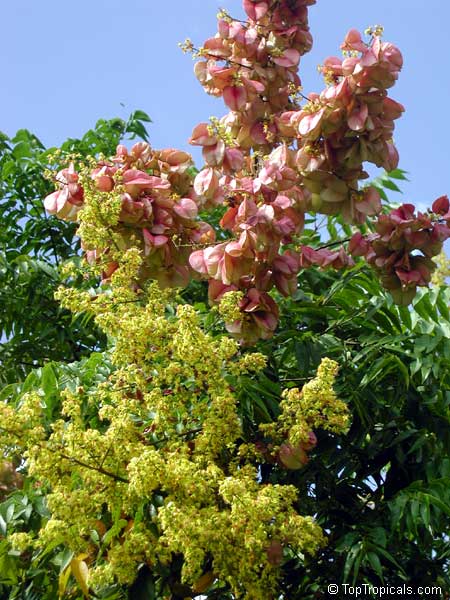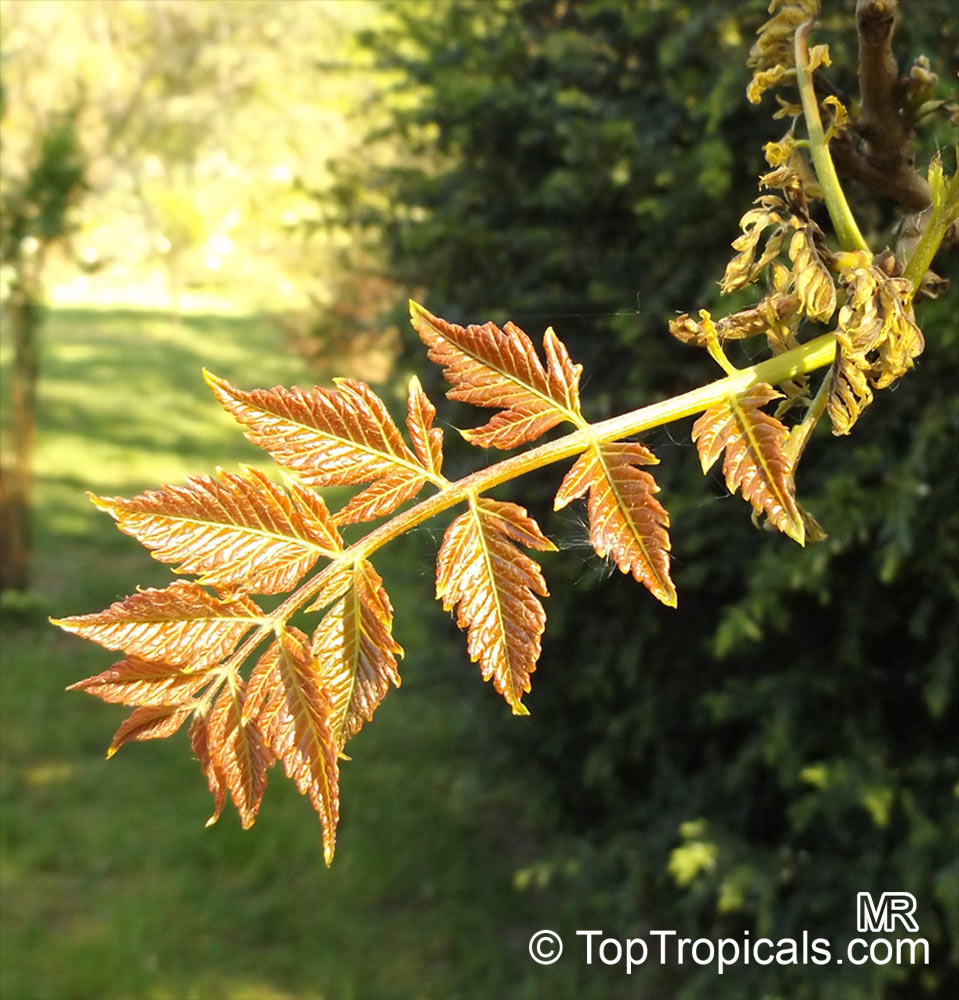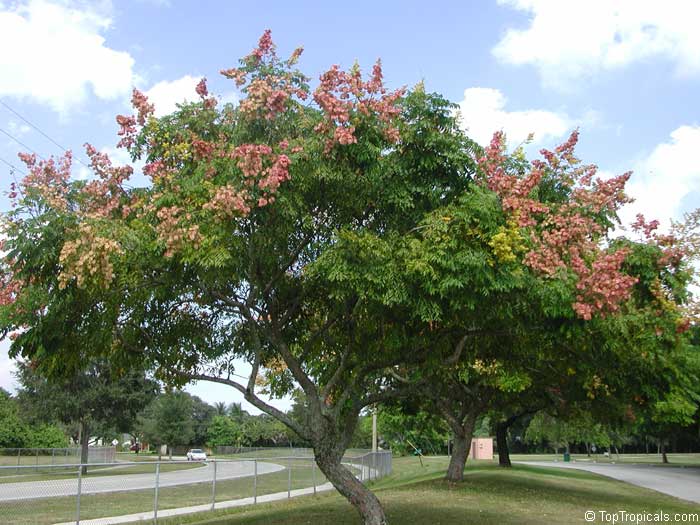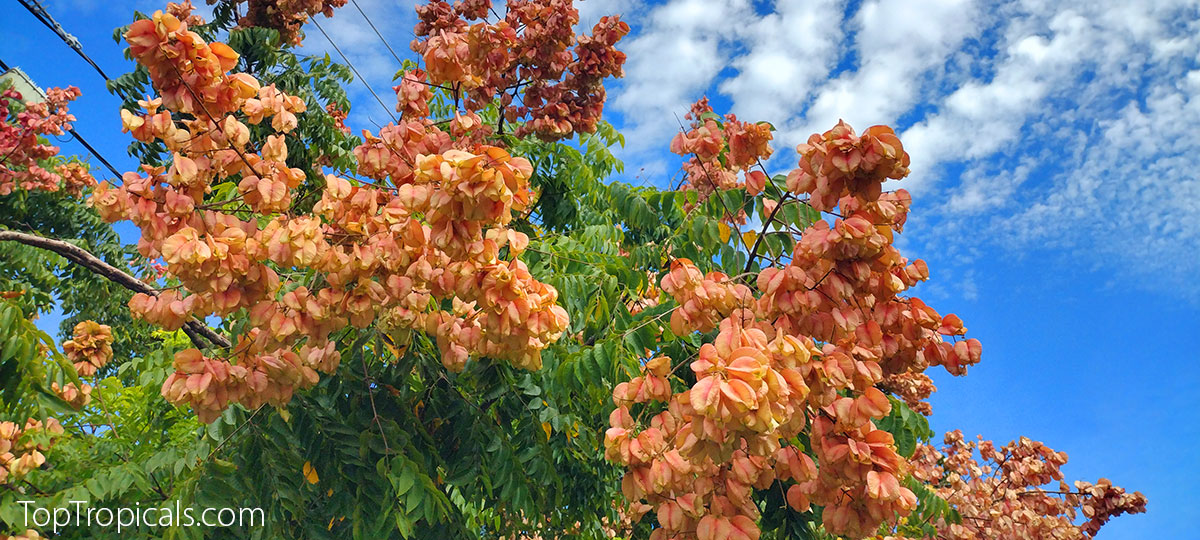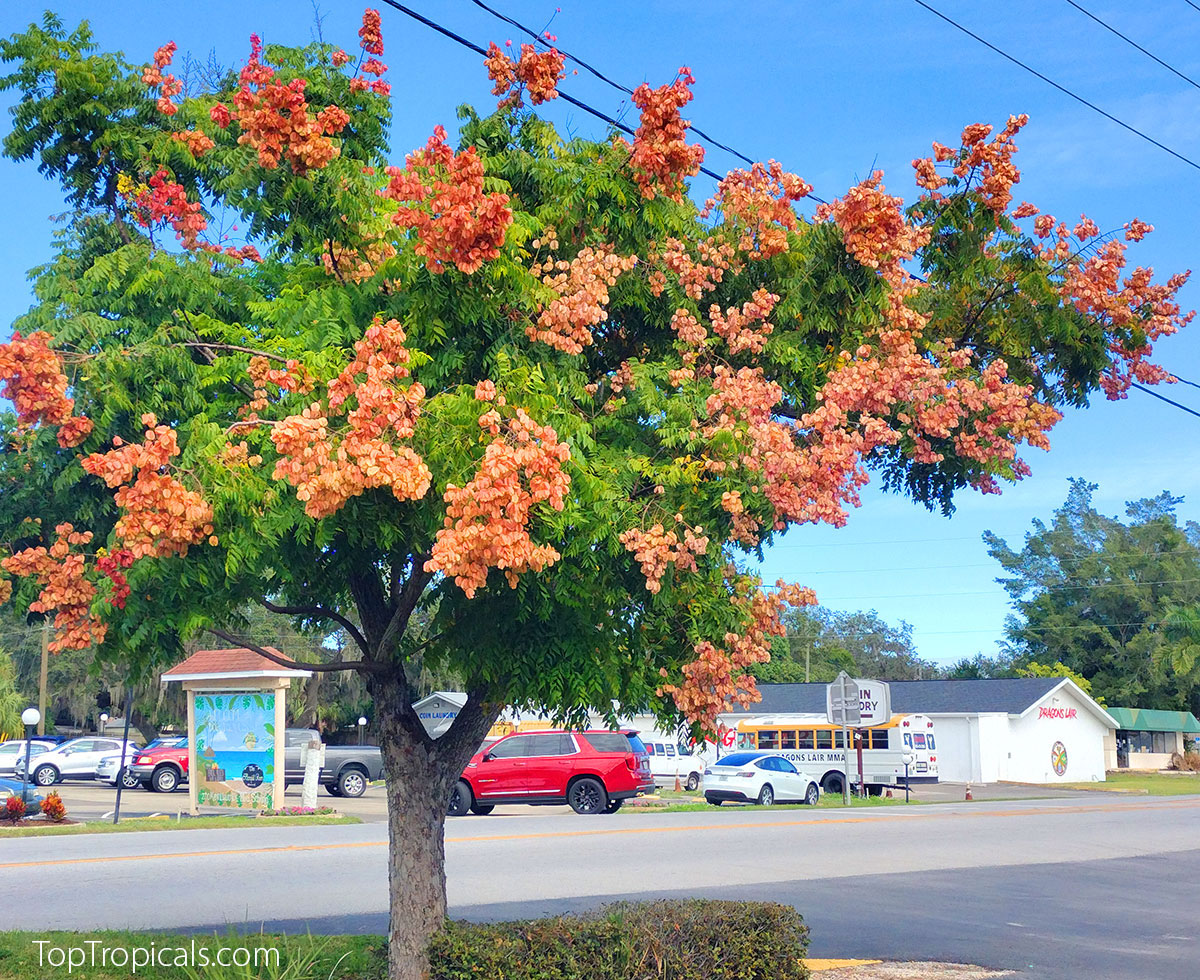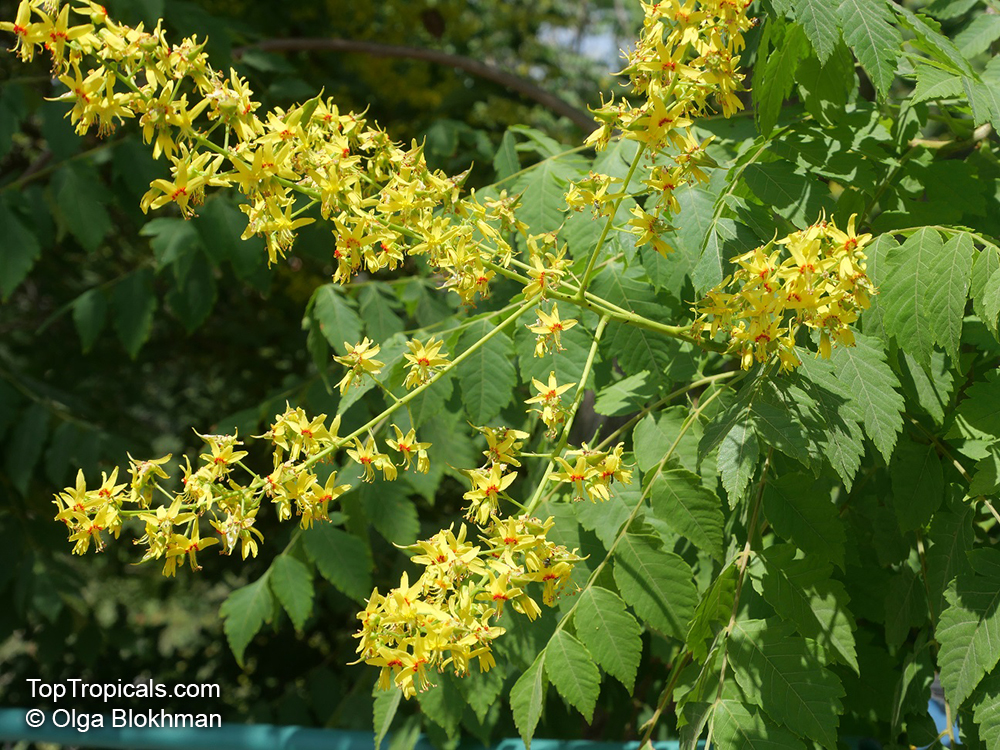Koelreuteria paniculata (Golden Rain Tree)
Top Tropicals Plant Encyclopedia
Botanical name: Koelreuteria paniculata
Common names: Golden Rain Tree, Varnish tree, Chinese Flame
Family: Sapindaceae
Origin: China and Korea









Koelreuteria paniculata, also known as the golden rain tree, is native to China and Korea. It is a small tree that grows to be 10-20ft tall. This tree thrives in full sun or semi-shade and requires moderate water. It is salt tolerant and can grow near the sea. Its bright yellow and orange flowers are attractive to butterflies and hummingbirds and bloom from summer through fall, possibly even into winter.
In addition to its beauty, Koelreuteria paniculata has a number of practical uses. The tree's fruit is edible and its seeds are dispersed when the inflated capsular fruits shatter and are blown by the wind. The tree is also used as a dye and in traditional medicine. It is considered low maintenance and has no serious pests or diseases. It is drought resistant and grown for its flowers and papery, lantern-like fruit.
The tree has a small, open-branching, deciduous form with a rounded crown. Its leaves are pinkish bronze to purplish when they first emerge in spring, turn bright green in the summer, and yellow (the intensity of the color may vary) in the fall. In China, the tree is known as "Luan" and its flowers are used as a yellow dye and in traditional medicine.
Koelreuteria paniculata thrives in USDA Zone 6-10. It can be grown in pots and is suitable for urban planting due to its adaptability to a wide range of soils and its tolerance of wind, drought, and city air pollutants. It grows best in well-drained soil in full sun and has a low growth rate. It can be staked in the early years to ensure a straight trunk and makes a nice patio tree, providing light shade. However, its brittle wood can break easily in windy weather.
According to ancient Chinese manuscripts, the Golden Rain Tree (Koelreuteria paniculata) is crucial for Dragons, as it is believed to be connected to their existence, guarding and complementing each other. Growing these plants is considered auspicious and is believed to safeguard the Dragon family.
Read more about Year of the Dragon.
Similar plants: Koelreuteria paniculata (Golden Rain Tree)
According to ancient Chinese manuscripts, the Golden Rain Tree (Koelreuteria paniculata) is crucial for Dragons, as it is believed to be connected to their existence, guarding and complementing each other. Growing these plants is considered auspicious and is believed to safeguard the Dragon family.
Read more about Year of the Dragon.
